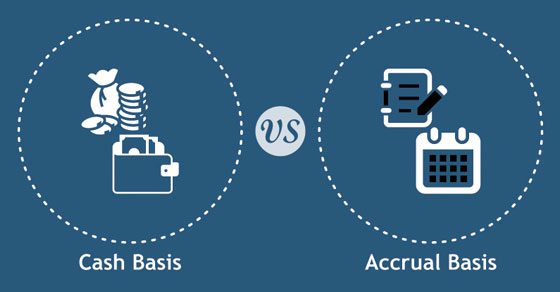 Financial statements are critical to monitoring your business’s financial health. In addition to helping management make informed business decisions, year-end and interim financial statements may be required by lenders, investors and franchisors. Here’s an overview of two common accounting methods, along with the pros and cons of each method.
Financial statements are critical to monitoring your business’s financial health. In addition to helping management make informed business decisions, year-end and interim financial statements may be required by lenders, investors and franchisors. Here’s an overview of two common accounting methods, along with the pros and cons of each method.
Cash Basis
Under the cash-basis method of accounting, transactions are recorded when cash changes hands. That means revenue is recognized when payment is received, and business expenses are recorded when they’re paid. This method is used mainly by small businesses and sole proprietors because it’s easy to understand. It also may provide tax-planning opportunities for certain entities.
The IRS allows certain small businesses to use cash accounting. Eligible businesses must have average annual gross receipts for the three prior tax years equal to or less than an inflation-adjusted threshold of $25 million. The inflation-adjusted threshold is $30 million for the 2024 tax year (up from $29 million for 2023). Businesses that use this method have some flexibility to control the timing of income and deductions for income tax purposes. However, this method can’t be used by larger, more complex businesses for federal income tax purposes.
Beware: There are some disadvantages to cash-basis accounting. First, it doesn’t necessarily match revenue earned with the expenses incurred in the accounting period. So cash-basis businesses may have a hard time evaluating how they’ve performed over time or against competitors. Management also may not know how much money the company needs to collect from customers (accounts receivable) or pay to suppliers and vendors (accounts payable and accrued expenses).
Accrual Basis
The accrual-basis method of accounting is required by U.S. Generally Accepted Accounting Principles (GAAP). So most mid-sized and large businesses in the United States use accrual accounting. Under this method, businesses record revenue when it’s earned and expenses when they’re incurred, regardless of when cash changes hands. It’s based on the matching principle, where revenue and the related business expenses are recorded in the same accounting period. This principle may help reduce significant fluctuations in profitability over time.
Revenue that’s earned but not yet received appears on the balance sheet, usually as accounts receivable. And expenses incurred but not yet paid are reported on the balance sheet, typically as accounts payable or accrued liabilities. Accrual accounting also may require some companies to report complex-sounding line items, such as prepaid assets, work-in-progress inventory and contingent liabilities.
Although this method is more complicated than cash accounting, accrual accounting provides a more accurate, real-time view of a company’s financial results. So it’s generally preferred by stakeholders who review your business’s financial statements. Accrual accounting also facilitates strategic decision making and benchmarking results from period to period — or against competitors that use the accrual method.
Additionally, businesses that use accrual accounting may enjoy a few tax benefits. For example, they can defer income on certain advance payments and deduct year-end bonuses that are paid within the first 2½ months of the following tax year. However, there’s also a tax-related downside: Accrual-basis businesses may report taxable income before they receive cash payments from customers, which can create hardships for businesses without enough cash reserves to pay their tax obligations.
Choosing the Right Method
To recap, not every business is able to use cash-basis accounting — and it has some significant downsides. But if your business has the flexibility to use it, you might want to discuss the pros and cons. Contact us for more information.



